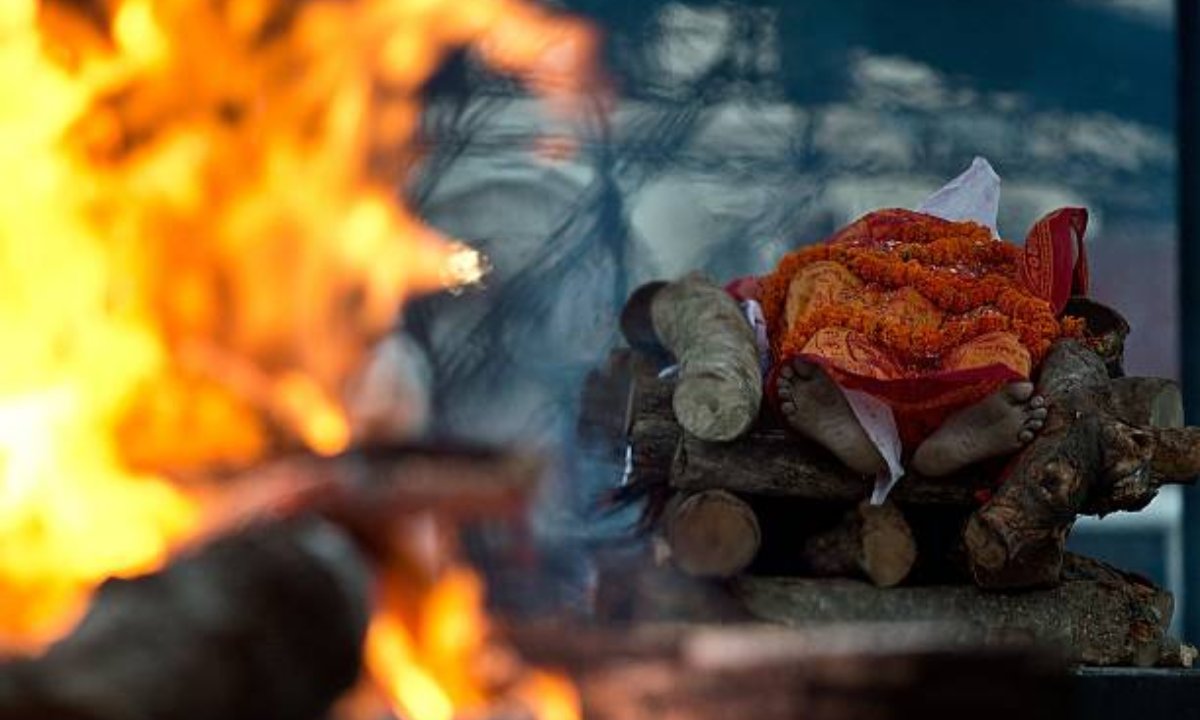Pitru Paksha or Shraadh Paksha is a 16-lunar day period in Hindu calendar when Hindus pay homage to their ancestors or pitrus. This period falls in the lunar month of Bhadrapada usually in September or October. It is a time when Hindu families remember their ancestors and offer prayers for their departed souls.
Significance and Beliefs
Pitru Paksha holds great cultural and religious significance for Hindus. As per Hindu beliefs, a soul takes rebirth and the cycle of life, death and rebirth continues based on their karma. During this period, it is believed that the souls of ancestors who have departed come to the earth to see their family members and be a part of rituals being performed for them.
Offering food, water and prayers during this period is said to help free the souls from the cycle of rebirth, give them moksha or liberation and help them attain salvation. It also ensures the well-being and prosperity of current and future generations. Fasting, rituals and offering food to crows are some of the common practices during Pitru Paksha.
Rituals and Practices
Some of the main rituals and practices performed during Pitru Paksha include:
- Tarpan: Offering water mixed with rice or other materials to the spirits of ancestors. This is done on each day and is the primary ritual.
- Pind Daan: Offering food to crows in memory of ancestors. The crow is considered a symbol of the ancestors.
- Shraadh Paksha: Special prayers are offered for ancestors and food is distributed among brahmins, poor and needy on each day.
- Fasting: Many observe a fast, especially on Mondays during this period to pay respects to ancestors.
- Visiting ancestral places: People visit places associated with their ancestors like their last resting places.
- Reciting scriptures: Passages from scriptures like Ramayana, Mahabharata and Bhagavad Gita are recited for the departed souls.
The rituals are intended to ensure the ancestors attain moksha and their blessings are sought for the happiness and prosperity of the family.
Regional Variations
While the essence remains the same, there are some regional variations in the rituals and practices observed during Pitru Paksha:
- In West Bengal, special food is prepared and offered to crows as part of the ritual.
- In Maharashtra, a black sesame seed and jaggery mix called ‘Pith’ is offered to crows.
- In Gujarat, people visit ancestral villages and offer food, prayers and donations.
- In South India, special prayers are offered before family deity and food is distributed.
- In Odisha, rice flakes mixed with cooked food are placed on banana leaves under peepal trees as offerings.
These local variations showcase how the ritual is adapted regionally while maintaining its spiritual significance.
What is Pind Daan and Tarpan?

Pind Daan and Tarpan are two important rituals performed during Pitru Paksha (Shraadh):
Pind Daan:
- Pind Daan means offering food to crows in memory of ancestors.
- The crow is considered a symbol of ancestors in Hinduism. It is believed crows would carry the food offering to their ancestors.
- Rice balls or other cooked food is offered to crows as part of this ritual seeking blessings and salvation for the departed souls.
Tarpan:
- Tarpan means offering water to ancestors. It is the primary ritual performed every day during Pitru Paksha.
- Water is mixed with rice or other materials like sesame seeds, flowers etc in a metal or leaf plate.
- This mixture is offered while chanting mantras and praying for the souls of ancestors.
- It is believed the ritual frees the souls from the cycle of rebirth and helps them attain moksha or salvation.
Pind Daan involves offering food to crows and Tarpan ritual offers water mixed with other materials as a means to pay homage to ancestors during Pitru Paksha. Both are significant rituals that play an important part in remembering and seeking blessings from ancestors as per Hindu beliefs.
How long has Pitru Paksha been celebrated?
- Pitru Paksha or Shraadh has been a tradition in Hinduism for thousands of years. Here are some key points about the history and origins of this ritual:
- References to rituals honoring ancestors and pitrs (forefathers) can be found in ancient Hindu scriptures like Vedas, Puranas, Upanishads and epics like Ramayana and Mahabharata.
- The Vedas dating back to at least 1500 BCE make mention of offering rice balls, water and prayers to ancestors during the lunar months of Bhadrapada and Ashwin.
- Rituals like Tarpan and Pind Daan find descriptions in Grihya Sutras and Dharma Sutras composed between 800 BCE to 200 CE. This indicates they were well established practices by that time.
- The practice was an integral part of the Vedic civilization in ancient India between 1500-500 BCE based on archeological evidence. Remains of rituals for ancestors have been found in Indus sites.
- References are found in the epics Ramayana and Mahabharata composed between 400 BCE to 400 CE, showing it was prevalent then.
- Historical texts like Manusmriti from 100 BCE also prescribe rituals to be performed in honour of ancestors.
In short, Pitru Paksha has been celebrated for at least 3000-4000 years based on evidence in ancient Hindu scriptures and historical texts. It is one of the oldest traditions that has withstood the test of time in Hinduism.
What is the story behind Pitru Paksha?
There is no single story behind the origin of Pitru Paksha rituals. However, some beliefs and mythological tales associated with it include:
- As per Hindu mythology, the lunar month of Bhadrapada is associated with ancestors or Pitrs. It is believed that during this period, the souls of ancestors return to the mortal world.
- One legend says that Lord Yama, the god of death, visits his son Yamraj in this month every year. It is said the souls of ancestors also accompany Yama to meet their family members.
- Another belief is that during this time, the gates of heaven are opened for the souls of ancestors to visit the living. Offering food, water and prayers ensures their journey back is peaceful.
- The Mahabharata describes how the Pandavas performed various rituals like Tarpan and Pind Daan for their ancestors during this period. This established it as an important tradition.
- It is believed that the ancestors are pleased with the rituals and bestow their blessings on the living. This ensures well-being and prosperity of family lines.
- Failure to perform the rituals would cause anger and unrest among the ancestor souls. Their curses could also bring misfortune to the family.
- Scriptures like Garuda Purana also advise specific rites to be carried on each day of Pitru Paksha to pacify different categories of ancestors.
So in essence, the rituals aim to appease ancestors who visit during this period, receive their blessings and help liberate their souls so their cycle of birth and death ends. Various mythological references contribute to how the tradition evolved over time.
Also Read: Understanding Iyengar Death Rituals





